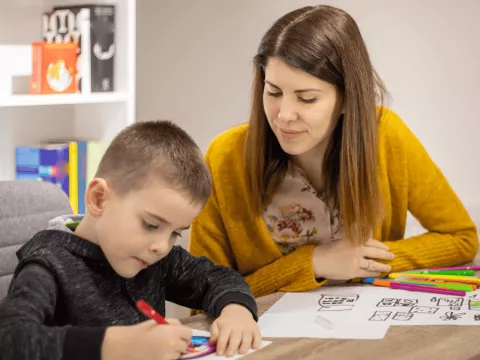- AdventHealth

Choose the health content that’s right for you, and get it delivered right in your inbox.
We don’t always stop to think about the origins of the things that make our lives easier and better, let alone the people behind them. The very origin of the Americas begins with Indigenous peoples, who thrived here long before European settlers made their way across the Atlantic.
One reason early Native Americans flourished was their ingenuity in developing a range of medical inventions — many of which are still in use today.
As we celebrate Native American Heritage Month, we recognize and pay tribute to the first Americans and the contributions they made to medicine and public health. Keep reading to learn more about a few of the innovations that continue to better our lives.
Early Vaccinations
The concept that led to the development of vaccines was understood and used well by Native Americans. Tribes are documented to have immunized themselves by ingesting small amounts of substances to protect their bodies from the harmful effects of the same substances in larger quantities. For example, it’s documented that a member of the Karuk Tribe recorded, “Ever since I started eating small parts of poison oak on a regular basis, I have not gotten the big rashes that I used to get.”
Syringes
Though a Scottish doctor was credited for the creation of the first hypodermic syringe in 1853, Natives in South America created a method long before colonization. By using a sharpened, hollowed-out bird bone connected to an animal bladder, these earliest syringes were used to do everything from injecting medicine to irrigating wounds. They were even used to clean ears and serve as enemas.
Pain Relievers
According to the History Channel, Native American healers pioneered pain relief. Indigenous populations in the Virginia area used jimson weed as a topical pain reliever by grinding the root to make a plaster for external wounds like cuts and bruises. Healers also had patients eat the plant as an anesthetic as they set broken bones.
Another Native American pain and inflammation remedy was tea brewed from the bark of the American black willow, which contains a chemical called salicin. Once it gets into the body, salicin makes salicylic acid, the active ingredient in aspirin. In other words, this Native American remedy led to the discovery of the most used medicine in the world!
Mouthwash
Tribes in Northeastern North America used the wildflower goldthread as a mouthwash to clean out the mouth. It was also an effective treatment for oral/dental infections and pain. They would even rub it onto the gums of teething infants.
Sunscreen
For hundreds of years, many Native cultures mixed ground plants with water to create skin protectants from the sun. Products they used such as sunflower oil, wallflower and sap from aloe plants have all been documented for their effectiveness in keeping skin healthy and protected from the sun’s rays. Animal fat and fish oils were also used as sunscreen.
Suppositories
Before modern-day solutions and dietary changes, Northeastern Tribes in North America created suppositories from dogwood trees. Dogwood is sometimes still used today externally for wounds. Hundreds of years ago, small plugs were fashioned by moistening, compressing and inserting the dogwood to treat hemorrhoids.
Electrolyte Rehydration
In the 1980s, a pediatrician from India conducted research with the White Mountain Apache Tribe that led to additional studies, and eventually, the development of Pedialyte®. The techniques used by the Indigenous people of Central Arizona showed that oral rehydration treatment prevented diarrhea-related deaths in children.
Baby Bottles and Formula
The Iroquois and Seneca Tribes invented baby bottles and baby formula, important to infants’ health when breast milk is not available. Inventors attached a quill on the end of the dried and greased stomachs of large prey, such as bears and buffalo, to act as a nipple. From this, they created the first baby bottle to feed infants.
From the Origins of Medicine to the Future of Health Care
Native American peoples have been using traditional healing practices for hundreds of years, and it’s clear their innovations of the past were forward-thinking. We celebrate how their inventions paved the way for many of our modern-day health practices and continue to influence the future of health care.
If you’re looking for a care provider or would like to learn more about preventive medicine, visit us here to find the support you need. You deserve to feel whole — in body, mind and spirit.


